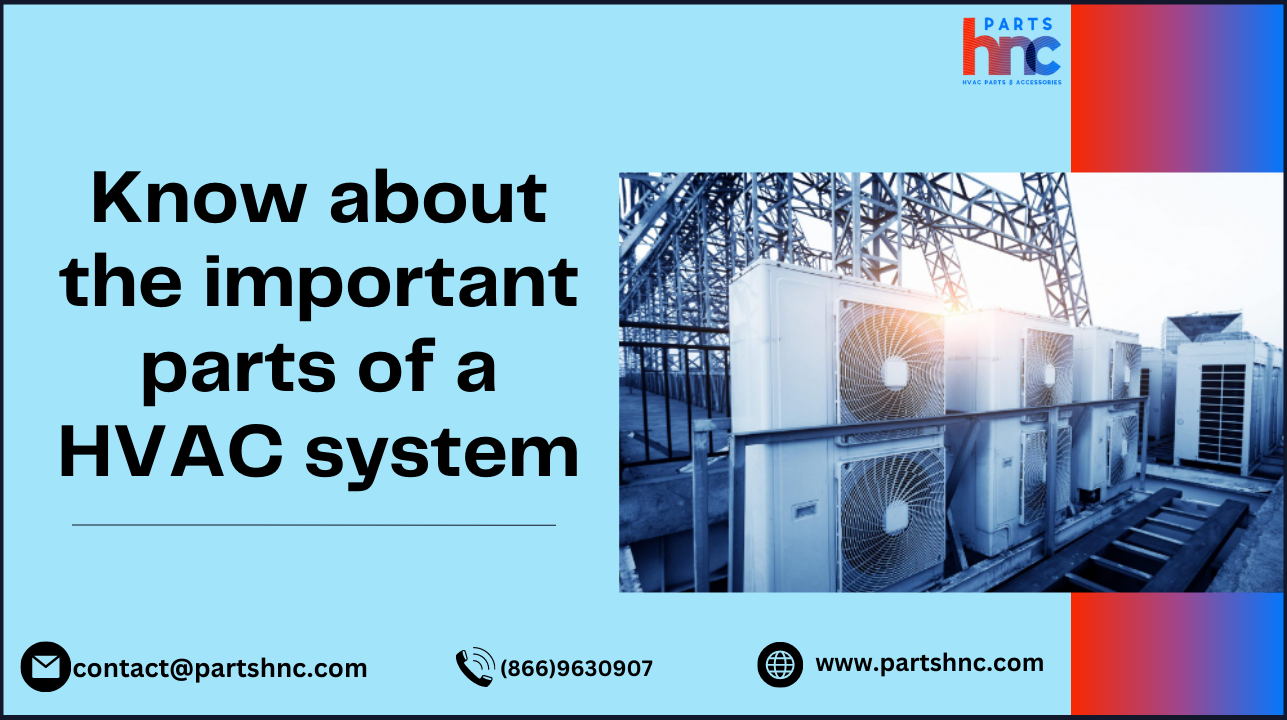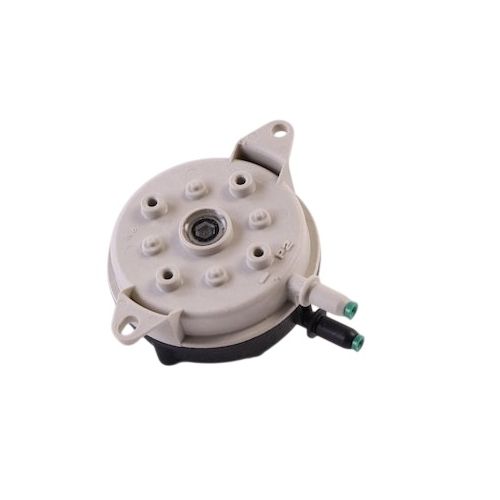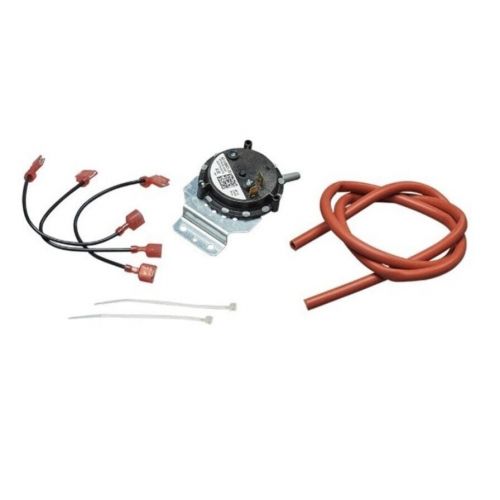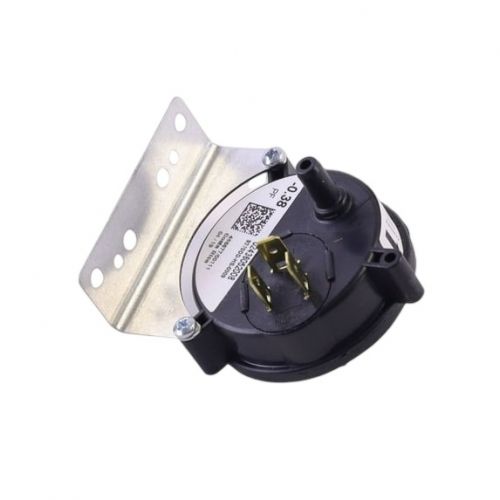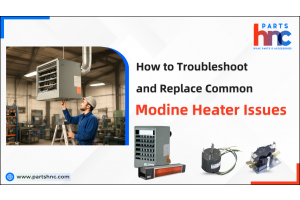7 Key Components of HVAC Systems
Have you ever wondered what keeps your indoor environment comfortable year-round? HVAC systems, play a crucial role. As we navigate the realm of heating, ventilation, and air conditioning, it's imperative to unravel the intricacies of its key components. Why, you ask? Because understanding HVAC systems vital elements empowers us to optimize efficiency, save energy, and ensure our well-being.
Top selling products
In this blog post, we embark on a journey through the 7 most important parts of the best HVAC system, shedding light on their functions and significance. Let's delve into the heart of indoor comfort and discover the secrets behind a seamlessly controlled environment.
| Table of contents: What Is an HVAC System? How Does an HVAC System Work? Important Parts of the HVAC System Maintenance and professional inspection of HVAC systems |
What Is an HVAC System?
A commercial or residential HVAC system is an integrated network of components designed to regulate indoor temperature, humidity, and air quality. Heating provides warmth during colder months, ventilation ensures fresh air circulation, and air conditioning offers cooling relief in hot seasons. This intricate system consists of essential parts such as the thermostat, furnace, heat exchanger, evaporator coil, condensing unit, air ducts, and vents. Together, these components collaborate harmoniously to maintain a comfortable environment, enhance energy efficiency, and improve overall indoor living conditions. Understanding these components is pivotal for effective system operation and optimization.
ParstHnC is your go to destination for all HVAC needs. We offer wide range of HVAC parts such as compressors, thermostats, evaporator coils, blower motor and many more from top-brands at competitive pricing. Shop with us & get it shipped on the same day.
How Does an HVAC System Work?
An HVAC system operates through three interconnected functions crucial for maintaining optimal indoor air quality and thermal comfort. This intricate system, comprising nine essential components, orchestrates the equilibrium within your living spaces. The air return ensures the circulation of air, while the filter sieves out impurities. Exhaust outlets release stale air, while ducts act as pathways for conditioned air. Electrical elements power the system, and the outdoor unit houses the compressor, responsible for cooling the refrigerant. Coils facilitate heat exchange, and the blower propels conditioned air. Understanding these components illuminates the workings of this complex system that keeps our living environments cozy and inviting.
Now that you know what an HVAC system & how it works. Let us delve & find out the parts of the HVAC system.
Know about the Top HVAC brands.
Important Parts of the HVAC System
An HVAC system, standing for Heating, Ventilation, and Air Conditioning, serves as the lifeline of indoor comfort. It's a sophisticated network of components working in harmony to ensure our spaces remain cozy in the winter and refreshingly cool in the summer. Understanding the key parts of hvac system unveils its magic and empowers homeowners to make informed decisions about maintenance and upgrades.
Furnace or Heat Pump:
The furnace or heat pump is the heart of an residential HVAC system. A furnace heats air using a combustion process, while a heat pump transfers heat between the indoors and outdoors. Both provide warm air during winter. Furnaces use a heat exchanger to warm air, which is then distributed through ductwork. Heat pumps work by extracting warmth from the outside air (even in cold weather) and circulating it indoors. These components play a vital role in maintaining indoor comfort and controlling temperatures year-round.
Heat Exchanger:
A heat exchanger is a critical part of furnaces and boilers. It allows combustion gasses to transfer their heat to the surrounding air without mixing the two. This process ensures that the air distributed throughout your home is warm and safe to breathe. The heat exchanger's efficiency impacts both heating effectiveness and energy consumption. A cracked heat exchanger can lead to dangerous carbon monoxide leaks. Regular maintenance and inspection are essential to guarantee its proper functioning and your family's safety.
Air Conditioning Unit:
The air conditioning unit is key for cooling indoor spaces during hot weather. It uses a refrigeration cycle to extract heat from indoor air and expel it outdoors, leaving behind cool air. AC components are a compressor, condenser, evaporator coil, and refrigerant lines. The compressor circulates refrigerant, converting it from low-pressure gas to high-pressure gas. As the refrigerant flows through the condenser and evaporator coils, heat exchange occurs, leading to cooling effects. Proper maintenance, including cleaning coils and changing filters, ensures efficient cooling and prolongs the unit's lifespan.
Evaporator Coil:
The evaporator coil is an essential part of the air conditioning unit. It's located inside the indoor air handler and facilitates the cooling process. As warm indoor air passes over the coil, the refrigerant inside absorbs heat and evaporates, cooling the air in the process. This cooled air is then circulated back into your living spaces. Keeping the evaporator coil clean is crucial for efficient cooling. Dust and debris accumulation can hinder heat exchange, reducing the system's performance and energy efficiency.
Ductwork:
The duct system components form the circulatory network of the HVAC system, distributing conditioned air to every corner while maintaining consistent airflow and ensuring a comfortable atmosphere throughout the space. This network of pipes or channels ensures that warm or cool air reaches various rooms. Well-designed ductwork maintains consistent airflow, balancing temperatures across the house. Leaky or poorly insulated ducts can lead to energy wastage and uneven comfort levels. Regular inspection, cleaning, and proper insulation are essential for optimal performance. Properly functioning ductwork contributes to energy efficiency, indoor air quality, and overall system effectiveness.
Electrical Elements:
Electrical components are integral to residential HVAC systems, enabling control, operation, and safety. Thermostats act as control centers, regulating temperature settings. Capacitors store and release electrical energy to start motors in air conditioners and furnaces. Relays control high-voltage components, like compressors and fan motors. Contactors manage power flow to motors and heaters. Transformers modify voltage levels, facilitating safe operation. Safety switches prevent system malfunctions or hazards. These electrical elements work together to automate system functions, ensuring efficient performance, user-friendly control, and protection against potential electrical failures or risks. Regular maintenance and inspection are essential to sustain their functionality and the overall HVAC system's safety and efficacy.
Condensing Unit:
The condensing unit is a vital component of an HVAC system's cooling process. It's located outside and works alongside the evaporator coil indoors. Comprising a compressor, condenser coil, and a fan, the unit plays a key role in the refrigeration cycle. The compressor pressurizes and circulates refrigerant gas, which enters the condenser coil. Here, heat is released as the refrigerant transitions from gas to liquid. The fan expels this heat into the outdoor air. This process cools and condenses the refrigerant, allowing it to return indoors as a low-pressure, low-temperature gas to absorb more heat.
Know more about the HVAC control systems and how do they work.
Maintenance and professional inspection of HVAC systems
Maintaining and professionally inspecting HVAC systems is essential for optimal performance. Here is what to do:
Regular HVAC System Upkeep
Maintaining your HVAC system is crucial for optimal performance. Regular check-ups ensure clean filters, efficient airflow, and extended lifespan. Don't overlook this simple step to prevent costly repairs down the line.
Benefits of Scheduled Professional Inspections
Professional HVAC inspections provide a trained eye to detect issues early. This proactive approach saves money on major repairs, enhances energy efficiency, and ensures your indoor comfort year-round. Invest in inspections for peace of mind.
DIY Maintenance Tasks and When to Call a Technician
While filter replacement and thermostat checks are DIY-friendly, complex tasks like duct cleaning require experts. If you notice uneven heating/cooling, strange noises, or high energy bills, it's time to call a skilled technician. Prioritize maintenance for a comfortable and cost-effective home environment.
The components comprising an HVAC system play integral roles in maintaining indoor comfort and air quality. From the thermostat's control to the intricate workings of the compressor and evaporator coils, each part contributes to efficient heating, cooling, and ventilation. Regular maintenance of these components ensures optimal performance, energy efficiency, and a conducive living or working environment, enhancing overall well-being and comfort.
FAQs
What are the 4 basic categories of HVAC systems?
The four basic categories of HVAC systems are split systems, packaged heating and cooling systems, ductless mini-split systems, and hybrid systems.
What is the most common HVAC system?
The most common HVAC system is the split system, which consists of both indoor and outdoor units to provide heating and cooling.
What is the number one problem with HVAC systems?
The number one problem with HVAC systems is poor maintenance, leading to issues such as reduced efficiency, breakdowns, and increased energy consumption.
How many years should a HVAC system last?
A well-maintained HVAC system can last around 15 to 20 years, although this can vary based on usage, maintenance, and system quality.
What are the common failure of HVAC system?
Common failures of HVAC systems include compressor issues, refrigerant leaks, electrical component failures, and airflow problems due to clogged filters or duct issues.


